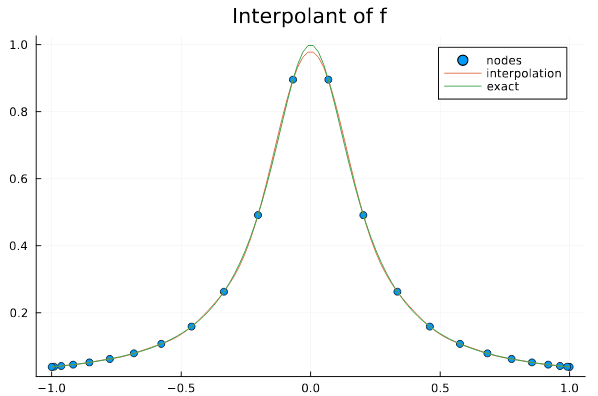MATH566 Lesson 10: Chebyshev grid interpolation
|
|
Overview
Motivation: minimize interpolation error
Here, the best possible behavior of is
identified.
-
Trigonometric expression of Chebyshev weight scalar product
-
Chebyshev recurrence relation
-
Roots and extrema of Chebyshev polynomials
-
Minimal inf-norm property of Chebyshev polynomials
-
Runge function on Chebyshev grid
Inf-norm of monic polynomials theorem
|
|
Theorem.
,
monic polynomial of degree
has a inf-norm lower bound
Proof. By
contradiction, assume the monic polynomial
has .
Construct a comparison with the Chebyshev polynomials by evaluating
at the extrema
,
Since the above states
deduce
|
(1) |
However,
both monic implies that
is a polynomial of degree
that would change signs
times to satisfy (1), and thus have roots contradicting the fundamental
theorem of algebra.



